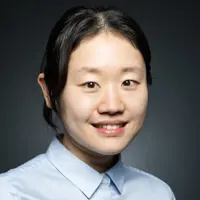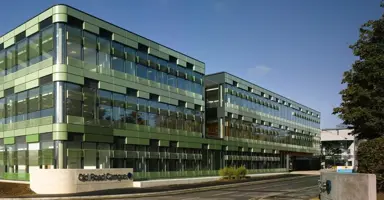Adaptive Optics
Adaptive optics
Devices that use light are integral to scientific, medical, and engineering fields. Familiar examples include microscopes, telescopes, lasers, and medical imaging technologies. However, their usefulness can be limited by distortions in light as it passes through the optical system. This can happen because of intrinsic limitations of the optical system or misalignment within it, as well as structural variations inside a sample. This light distortion causes downstream problems. In microscopes, it reduces the detail that can be seen in the image and introduces errors such as vignette effects, loss of contrast, or noise. In laser technologies, a focused laser beam loses its precision.
Adaptive optics (AO) provides a solution to these problems by compensating for light distortion. In optical systems fitted with adaptive optics devices, light is manipulated on its journey so that distortions are corrected. Measurements of the nature and extent of the distortions are used to inform tailored interventions that correct them. A number of different adaptive optics technologies are actively researched by the DOP group.
Adaptive optics for high-resolution imaging
Karen M. Hampson, Raphaël Turcotte, Donald T. Miller, Kazuhiro Kurokawa, Jared R. Males, Na Ji & MJ Booth. Nature Reviews Methods Primers 1(68), 1-26 (2021)
Adaptive optical microscopy: the ongoing quest for the perfect image
M. J. Booth Light: Science & Applications 3 e165 (2014).
AO control systems in microscopes
In adaptive optics devices for telescopes or retinal imaging systems, light can be directly measured whilst passing through the system using a sensor. It is more difficult to do this in microscope systems. Instead, indirect (sensorless) measurements are commonly used. These sensorless methods rely upon estimating aberrations from a short sequence of test images. They require simpler hardware, but can be slower, requiring longer sample exposures that might affect the sample or reduce image quality. Our research has concentrated on improving the efficiency of sensorless AO by reducing the number of images required or through increasing the accuracy or range of estimation.
Recent work in the DOP group has aimed to tackle this problem by exploring advanced machine learning-based control algorithms in optical microscopes that can rapidly correct light distortions. The group has shown the advanced performance of such algorithms in challenging imaging tasks, including functional neuro-imaging and super-resolution microscopy.
Publications
Multi-scale sensorless adaptive optics: application to stimulated emission depletion microscopy
Jacopo Antonello, Aurélien Barbotin, Ee Zhuan Chong, Jens Rittscher, & Martin J. Booth. Optics Express 28(11), 16749-16763 (2020)
A universal framework for microscope sensorless adaptive optics: Generalized aberration representations
Q. Hu, J. Wang, J. Antonello, M. Hailstone, M. Wincott, R. Turcotte, D. Gala & M. J. Booth, APL Photonics 5, 100801 (2020)
Universal adaptive optics for microscopy through embedded neural network control
Qi Hu, Martin Hailstone, Jingyu Wang, Matthew Wincott, Danail Stoychev, Huriye Atilgan, Dalia Gala, Tai Chaiamarit, Richard M. Parton, Jacopo Antonello, Adam M. Packer, Ilan Davis & Martin J. Booth. Light: Science & Applications 12:270 (2023)
Liquid crystal devices for microscopy
Common adaptive optics devices include deformable mirrors and spatial light modulators (SLM). These can be complex and bulky systems that contain many component parts and require high voltage electronic drive circuits. In many microscopy applications, such complexity is not necessary because the extent of light distortion is straightforward and predictable, consisting mostly of low-order aberration modes with smooth shapes.
The DOP group has produced novel liquid crystal devices that offer a simpler alternative to existing devices. These are modal-based liquid crystal phase plates, each driven by a single pair of electrodes and low voltage (around 10 V). These are potentially much cheaper to manufacture, easy to drive and control, and ideal for cases when low-order smooth shapes are the dominant distortion type. Unlike most existing adaptive optics devices, which are reflective in nature, the novel liquid crystal device is transmissive. This offers the additional advantage of making the device easier to integrate into optical systems.
Publications
Laser-Written Tunable Liquid Crystal Aberration Correctors
Alec Xu, Camron Nourshargh, Patrick S. Salter, Chao He, Steve J. Elston, Martin J. Booth & Stephen M. Morris, ACS Photonics 10(9) 3401−3408 (2023)
Speckle compensation
A new liquid crystal-based device manufactured by the DOP group provides a novel way to compensate for speckles – a type of image noise caused when a coherent light source experiences interference. The prevailing method of speckle correction is through physically moving either the light source or other optical elements at a speed faster than human reaction time so that the speckle is unnoticeable, but this is not ideal.
The DOP group has developed a liquid crystal coherence modulator as an alternative solution. This device is driven by a low voltage AC which constantly drives the liquid crystal orientations to minimise the temporal coherence of the light source. An advantage of this device is that it contains no physical moving parts at the macro level. Additionally, both the voltage and current are low, resulting in a small energy consumption.
Publications
Zwitterion-doped Liquid Crystal Speckle Reducers for Immersive Displays and Vectorial Imaging
Yihan Jin, Nathan P. Spiller, Chao He, Martin J. Booth, Steve J. Elston & Stephen M. Morris. Light: Science & Applications 12:242 (2023)
New dimensions for adaptive optics
Adaptive optics commonly concentrates on the correction of phase distortion in light, i.e. distortions that cause some parts of a light wavefront to be delayed more than others. However, it can be also applied to optical properties other than phase, literally bringing new dimensions to AO capabilities.
Active areas of research include spatiotemporal control of short-pulse lasers and light polarization, as well as intensity and coherence control to further expand AO applications.
Publications
Four-dimensional light shaping: manipulating ultrafast spatio-temporal foci in space and time
Bangshan Sun, Patrick S Salter, Clemens Roider, Alexander Jesacher, Johannes Strauss, Johannes Heberle, Michael Schmidt & Martin J Booth, Light: Science & Applications 7, 17117 (2018)
Pulse front adaptive optics: a new method for control of ultrashort laser pulses
Bangshan Sun, Patrick S. Salter & Martin J. Booth. Optics Express 23(15) 19348-19357 (2015)
Vectorial adaptive optics
Vectorial adaptive optics (V-AO) incorporates a consideration of the polarisation properties of light, i.e. distortions that cause the rotation of light waves at any angle in a plane perpendicular to the direction of motion.
The group has shown that V-AO can be implemented using direct measurement of light through sensor feedback, indirectly using sensorless adaptive optics, or in a hybrid form that combines aspects of both. This paves the pathway for next generation adaptive optics functionality by manipulating the complex vectorial field.
Work on V-AO is carried out in collaboration with the Vectorial Optics and Photonics (VOP) group in the Department of Engineering Science at the University of Oxford.
Publications
Vectorial adaptive optics
Chao He, Jacopo Antonello & Martin J. Booth. eLight 3:23 (2023)

Adaptive Optics Group Members

Jingyu Wang
Postdoctoral Research Assistant

Axin Fan
Postdoctoral Research Assistant

Biwei Zhang
DPhil Candidate




